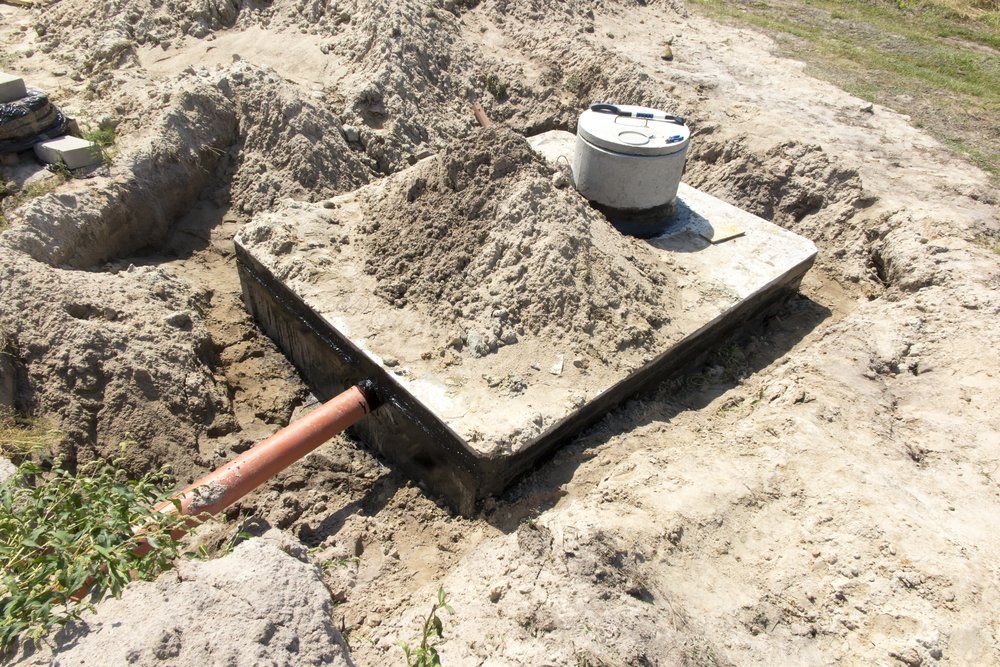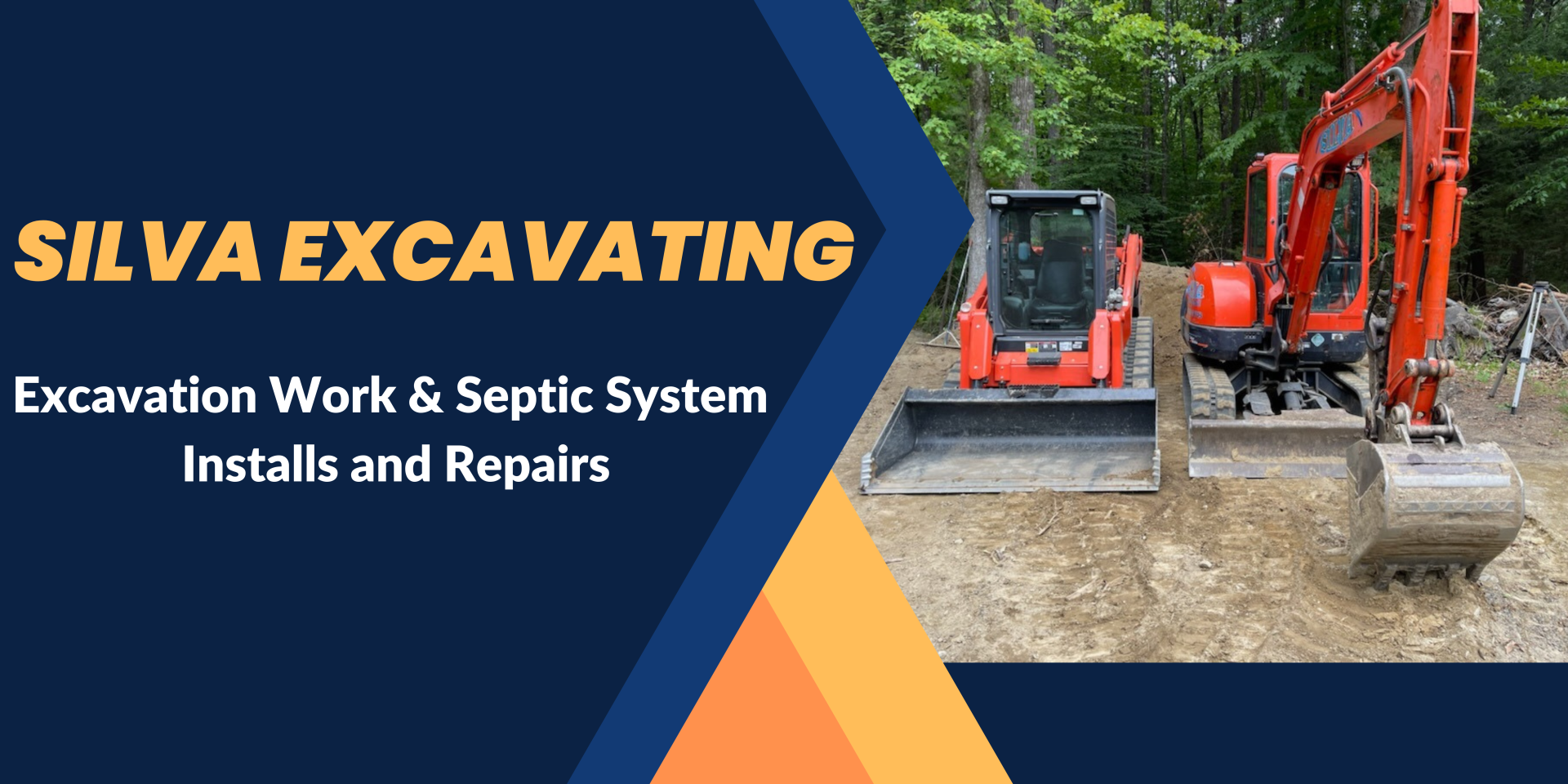Septic Install Pepperell MA
Tired of Dealing With Slow Drains, Sewage Backups, or Old Septic Systems?
If you live in Pepperell MA, you know the importance of a working septic system. Slow drains, foul odors, or soggy yard patches are more than an inconvenience—they are warning signs of septic failure. Left unchecked, these problems lead to costly repairs, hazardous waste leaks, and property damage.
Don’t Let an Outdated Septic System Cost You Thousands
Ignoring septic issues doesn’t just cause health risks—it can ruin landscaping, damage home foundations, and lead to expensive emergency repairs. DIY installations or hiring unqualified contractors can create improper drainage slopes, groundwater contamination, and system overload. These costly mistakes can turn into long-term headaches for homeowners.
Invest in a Professional Septic Install in Pepperell MA for Long-Term Peace of Mind
At Silva Excavating, we provide reliable and professional septic installation services in Pepperell MA, ensuring your home has safe, efficient wastewater treatment for decades to come. We handle the complete process—from site inspection and excavation to system installation and final grading—giving you peace of mind that your septic system is built to last.
Why Choose Silva Excavating for Your Septic Install in Pepperell MA?
✅ Certified, Experienced Crew: Our licensed professionals follow Massachusetts Title 5 regulations and local codes.
✅ Complete Septic Solutions: We handle new installations, replacements, and full septic system upgrades.
✅ Proper Drainage Planning: Every installation uses the correct slope, soil treatment, and layout for optimal flow and longevity.
✅ Top-Tier Equipment: Modern excavation machinery ensures safe and efficient installs, even in tough soil conditions.
✅ High-Quality Materials: From tanks to drain fields, we only use approved, durable materials.
✅ Transparent Pricing: We provide upfront, clear estimates with no hidden fees.
The Silva Excavating Septic Installation Process
Step 1: Site Evaluation and Soil Testing
Before any digging begins, our team assesses your property. We conduct percolation tests and soil assessments to determine drainage capability and select the right system design for your location.
Step 2: Planning Your Septic System
We design a custom septic layout that factors in home size, occupancy, and groundwater levels. We determine ideal tank placement, drain field size, and pipe slope to ensure trouble-free use.
Step 3: Excavation and Site Preparation
Our excavation experts dig the septic trenches or pit, carefully avoiding damage to utility lines or surrounding structures. We prepare the area with proper bedding to stabilize the tank.
Step 4: Septic Tank Installation
We install heavy-duty concrete or high-strength plastic septic tanks based on your property’s needs. Tanks are placed at precise depths to guarantee correct inflow and outflow gradients.
Step 5: Drain Field Installation
Next, we build the drain field (leach field), using gravel and perforated piping, ensuring wastewater filters safely into the soil. Drainage slopes are meticulously calculated to avoid backups.
Step 6: System Backfill and Final Grading
After inspections, we backfill with care, compacting soil to avoid settlement. Final grading directs surface water away from the system, reducing future maintenance problems.
Step 7: Final Inspection and Approval
Before closing, your system undergoes local Board of Health inspection to verify code compliance and performance.
Types of Septic Systems We Install in Pepperell MA
✅ Conventional Septic Systems
Perfect for properties with ample space and well-draining soil.
✅ Chamber Systems
Ideal for reducing gravel use while offering efficient wastewater treatment.
✅ Mound Systems
Used for areas with high groundwater, shallow soil, or bedrock close to the surface.
✅ Pressure Distribution Systems
Great for even wastewater distribution in complex or sloped sites.
✅ Advanced Treatment Systems
Designed for environmentally sensitive areas requiring additional filtration before groundwater release.
Benefits of a Professional Septic Install in Pepperell MA
✔️ Protects Your Property: Prevents backups, soggy yards, and household damage.
✔️ Saves Money Long-Term: Proper installation reduces repair frequency and increases system life.
✔️ Safe Wastewater Disposal: Meets health codes and reduces groundwater contamination risks.
✔️ Increases Home Value: A modern, compliant septic system is attractive to future buyers.
✔️ Tailored to Your Home: Each system is customized for your household size, usage, and soil conditions.
Common Septic Installation Problems We Prevent
❌ Incorrect Pipe Slopes Causing Flow Issues
❌ Poor Drainage That Floods Yards
❌ Undersized Systems Leading to Frequent Pumping
❌ Improper Tank Placement Affecting Landscaping and Accessibility
❌ Non-Code Compliant Installs Leading to Failed Inspections
With Silva Excavating, you avoid these problems entirely by hiring licensed pros who do it right the first time.
Signs You May Need Septic System Replacement
✔️
Frequent Clogs and Sewage Backups
✔️
Standing Water or Foul Smells in the Yard
✔️
Septic Tank Cracks or Collapsed Drain Field
✔️
Failed Board of Health Inspections
✔️
Tank Over 30 Years Old with Poor Functionality
If you notice these red flags, a replacement septic install may save you from emergency repairs.
Ready for a Stress-Free Septic Install? Contact Silva Excavating!
We’re your local Pepperell MA experts for septic system installations. Whether it’s a new home build or a replacement, we guide you through every step—testing, permitting, installation, and inspection. Enjoy proper wastewater treatment and peace of mind for decades.
📞 Call Silva Excavating today for a FREE site evaluation and honest estimate.
Post-installation tank movement is observable, predictable, and preventive. Proper assessment of original soil, bedding materials, groundwater depth, backfill materials, and stress loads prevents future issues. Follow any manufacturer-specific septic tank installation instructions. The tank's position should be staked before excavation. Verify the tank(s)' height and orientation per design. If the installer is not responsible for the plumbing stub-out, he or she should address elevation requirements for gravity flow. The slope of the collecting pipe from the stub-out to the tank should be 1-2% (1/8- to 1/4-inch drop per foot). The output of a septic tank must be high enough to enable gravity flow to succeed components. In gravity-only systems, the soil treatment area's elevation controls the flow. All other heights should be determined by the soil treatment area's elevation to prevent overdosing. Dosing tank inlets must be deep enough to accommodate gravity flow from preceding components. Any tank may have several inlets with varying regulating altitudes, thus examining the complete treatment train. Keep tanks as shallow as possible to reduce soil pressure, limit groundwater penetration, and ease maintenance. In high-groundwater situations, water in the excavation indicates the need to dewater. Sometimes these safeguards are just needed during installation, but sometimes they're permanent. Dewatering means the site's safety risk has grown.
The Process of Excavation and Septic Tank Installation
Installing a septic tank in Pepperell MA entails excavating a trench, connecting the main sewage line to the tank outlet, and pouring concrete and other materials into it. After pumping and compacting the earth to find the septic zone, concrete and other materials are put in. The tank is buried. After the concrete has cured, an Excavator breaks up soil and debris. A tumbler pump then injects water. Your septic system needs frequent tank cleaning and maintenance. Not cleaning your septic tank might cause expensive complications. Septic system issues may be avoided. Before installing a septic tank, check it completely. Without this examination, the system may rupture. This needs expensive fixes. If your tank is damaged, the earth may have sunk and produced drainage issues. You'll need backhoes, excavators, skid-steers, and dump trucks to build a septic tank. Enough plumbers, electricians, and landscapers are needed to finish all duties. You must bring in dirt, gravel, and other supplies.
How to Approach the building of a Septic Tank
One of our specialists can replace your septic tank filter. When installing a septic tank, a new lid is needed. There are various tank lid possibilities. We can install and repair your septic tank. Some people think that to install a septic tank is straightforward and quick. Professionalseptic tank installers should be hired by homeowners. One of our professionals will install and or repair your tank and septic system. You should seal your tank. Make sure your tank is at least 3 feet from your home, garage, deck, or fence for optimal results. Close off the area once the sewage is removed. These feces will be broken down by anaerobic bacteria and sent down the drain. You'll soon notice that all of your home's sewage has been evacuated and the septic tank has been restored to normal.
Tips for Excavating and Installing Septic Tanks
The excavation must be level (using bedding material, if necessary) and clear of big rocks or debris to build a level tank. All tanks must be stabilized using bedding. Soil may sometimes be used as bedding. Local restrictions should be checked. When using native soil as bedding, avoid over-excavating to keep the hole bottom undisturbed.
🔗Explore More Excavating Services
●🛠️Excavation Pepperell MA
●🛠️Retaining Wall Pepperell MA
●🛠️Septic Install Pepperell MA
●🛠️Drainage Pepperell MA
● 🛠️Site Work Pepperell MA
●🛠️Land Clearing Pepperell MA
FAQ: Septic Install Pepperell MA
How long does a septic installation take in Pepperell MA?
Typically, septic installs take 3-5 days, depending on site conditions, system type, and weather.
Do I need a permit for a septic install in Pepperell MA?
Yes, all septic installs require approval from the Pepperell Board of Health and a valid Title 5 soil test.
How much does a septic install cost in Pepperell MA?
Most installs range from $10,000 to $25,000, varying based on system type, excavation difficulty, and site size.
How long should my septic system last?
A properly installed and maintained septic system can last 25-40 years, depending on usage and materials.
How often should I pump my septic tank?
Most households should pump their septic tank every 3-5 years to maintain system efficiency.
Can you replace just the drain field?
Yes! If the tank is in good condition, we can replace or upgrade just the leach field, saving you money.
Silva Excavating — Trusted experts for reliable, long-lasting septic installs in Pepperell MA.



